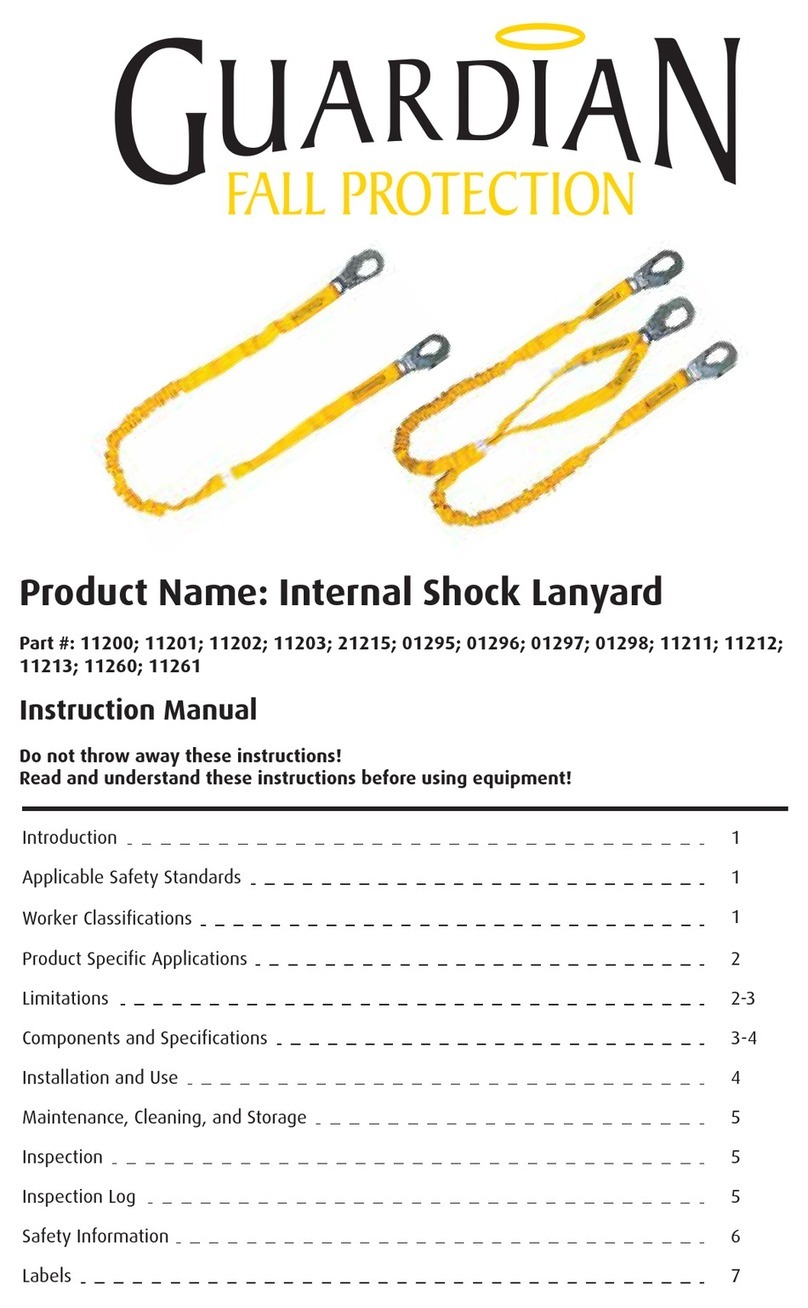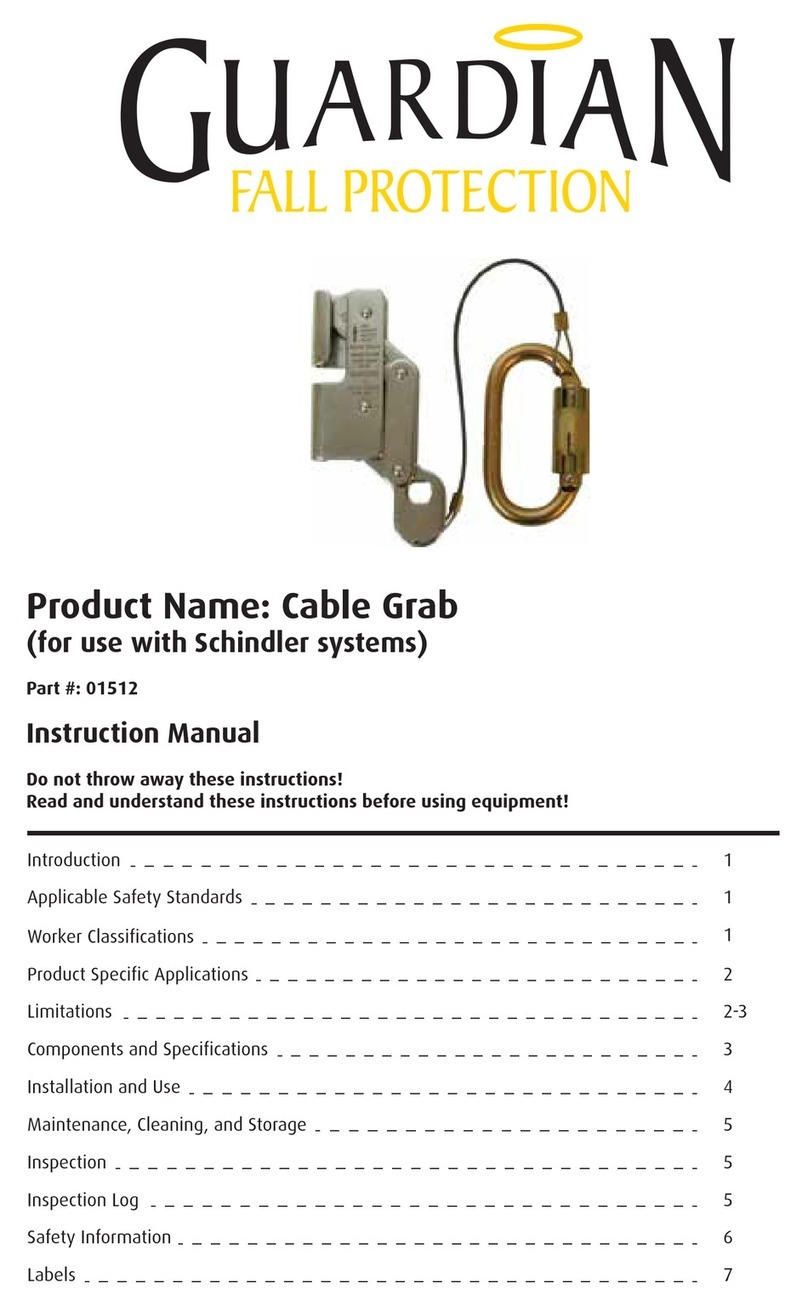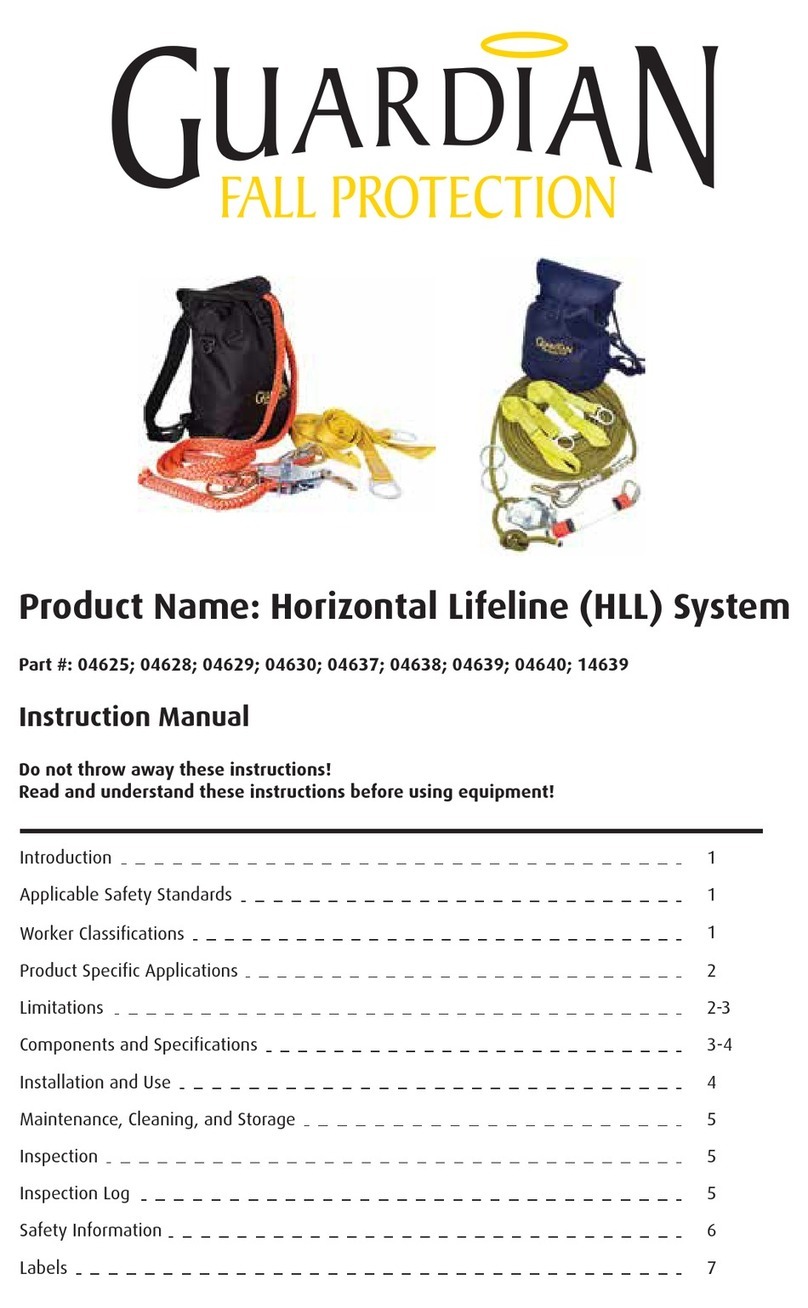
Maintenance, Cleaning, and Storage
Repairs to Velocity SRLs can only be made by a Guardian Fall Protection representative or an
entity authorized by Guardian. Contact Guardian for all maintenance and repair needs at:
1-800-466-6385. If a Velocity SRL fails inspection in any way, immediately remove it from
service, and contact Guardian to inquire about its return or repair.
Cleaning after use is important for maintaining the safety and longevity of Velocity SRLs.
Remove all dirt, corrosives, and contaminants from Velocity SRLs before and after each use. If
Velocity SRL cannot be cleaned with plain water, use mild soap and water, then rinse and wipe
dry. NEVER clean Velocity SRLs with corrosive substances.
When not in use, store equipment where it will not be affected by heat, light, excessive
moisture, chemicals, or other degrading elements.
KEEP INSTRUCTIONS AVAILABLE FOR REFERENCE. Record Date of First Use.
Prior to EACH use, inspect Velocity SRL for deficiencies, including, but not limited to, corrosion,
deformation, pits, burrs, rough surfaces, sharp edges, cracking, rust, paint buildup, excessive
heating, alteration, broken stitching, fraying, bird-caging, and missing or illegible labels. Inspect
full length of lifeline. IMMEDIATELY remove Velocity SRL from service if defects or damage are
found.
Prior to EACH use, check lifeline retraction by pulling out a minimum 4’ and allowing it to retract
under light tension; lifeline must retract completely. Pull lifeline sharply to test braking function;
brakes must engage. Check arrest indicator on connector for signs of activation. Indicator will
display red if unsafe for use. IMMEDIATELY remove from service if Velocity SRL does not function
properly, of if exposed to forces of fall arrest.
Ensure that applicable work area is free of all damage, including, but not limited to, debris, rot,
rust, decay, cracking, and hazardous materials. Ensure that selected work area will support the
application- specific minimum loads set forth in this instruction manual. Work area MUST be
stable.
Every 6 months, a Competent Person other than the user must inspect Velocity SRL. Competent
Person inspections MUST be recorded in inspection log in instruction manual and on
equipment inspection grid label. The Competent Person must sign their initials in the box
corresponding to the month and year the inspection took place.
During inspection, consider all applications and
hazards Velocity SRL has been subjected to.
Inspection
Guardian Fall Protection 6305 S. 231st St., Kent, WA 98032 phone: (800) 466-6385 fax: (800) 670-7892 www.guardianfall.com
5
Example impact indicator:
• Green: Undeployed
• Red: Deployed































